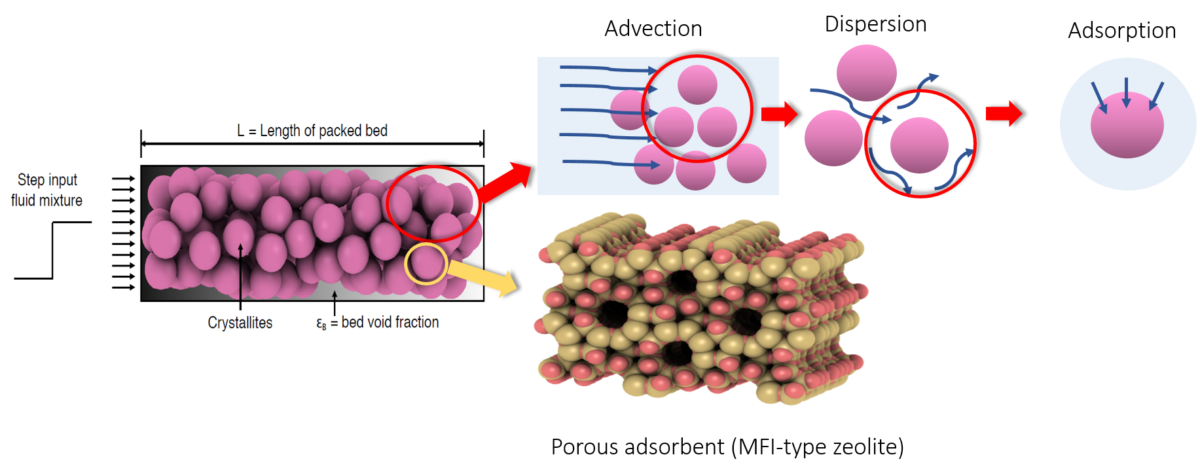Can we predict the behavior of adsorption processes through simulations? PhD candidate Shrinjay Sharma (TU Delft) developed a new simulation code, RUPTURA, to do just that. Together with his colleagues, he recently published his code in Molecular Simulation.

The RUPTURA code can generate breakthrough curves; i.e. calculates concentration as a function of time at the exit of the fixed bed adsorption column. This is useful to design adsorption based separation process for fluid mixtures. RUPTURA can plot breakthrough curves and generate movies for variation of adsorbed loadings and concentrations of species present in the mixture as a function of position and time inside the column.
The code can also predict adsorption isotherms for mixtures. Adsorption isotherm illustrates how the amount of gas/liquid that adhere to the surface of the adsorbent (solid material) changes with respect to the concentration or pressure of the gas/liquid at a constant temperature. Right now, the focus is on gases rather than liquid. In future, it will be expanded to liquid systems.
Finally, it can also fit pure component adsorption isotherm data to existing isotherm models from literature using genetic algorithm. The RUPTURA code is a free and open-source software package, and can be found here.
Shrinjay also published an article on predicting mixture isotherms for adsorption of molecules inside heterogeneous materials. Comparisons were drawn with the existing models such as Ideal Adsorbed Solution Theory (IAST) and Segregated IAST for predicting mixture adsorption isotherms. These mixture isotherm models are included in the newly developed RUPTURA software.